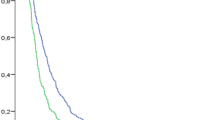Abstract
Tracheoesophageal voice prostheses need to be replaced due to increased airflow resistance or retrograde leakage of fluid into the trachea as a consequence of biofilm formation. Previous in vitro studies show a change of aerodynamic features of biofilm covered voice prostheses after removal of the prostheses out of the patient. To assess these changes in an in situ situation, aerodynamic characteristics were measured within 45 patients at the beginning and at the end of the wearing process of the Provox 2 voice prosthesis. As a consequence, the influence of biofilm formation on aerodynamic characteristics can be evaluated. In the majority of cases, leakage through the prosthesis was the reason for replacement. No differences were found in the total flow, volume range and intratracheal pressure (ITP) of the voice prostheses measured. The airflow resistance of biofilm covered prostheses was significantly reduced compared to new clean prostheses. However, no correlation was found between the extent of biofilm and the different aerodynamic features measured. Biofilm formation on the Provox 2 is responsible for both reduction in airflow resistance and leakage through the prosthesis by deterioration of the silicone rubber material.

Similar content being viewed by others
References
Blom ED, Hamaker RC (1996) TRacheoesophageal voice restoration following total laryngectomy. In: Myers EN, Suen J (eds) Cancer of the head and Neck. WB Saunders Publishers, Philadelphia, pp 839–852
Zijlstra RJ, Mahieu HF, Lith-Bijl JT, Schutte HK (1991) Aerodynamic properties of the low-resistance Groningen button. Arch Otolaryngol Head Neck Surg 117(6):657–661
Hilgers FJ, Cornelissen MW, Balm AJM (1993) Aerodynamic characteristics of the low-resistance, indwelling Provox voice prosthesis. Eur Arch Otorhinolaryngol 250(7):375–378
Mahieu HF, van Saene HK, Rosingh HJ, Schutte HK (1986) Candida vegetations on silicone voice prostheses. Arch Otolaryngol Head Neck Surg 112(3):321–325
Neu TR, Dijk F, Verkerke GJ, van der Mei HC, Busscher HJ (1992) Scanning electron microscopy study of biofilms on silicone voice prostheses. Cells and Mater 2(3):261–269
Neu TR, van der Mei HC, Busscher HJ, Dijk F, Verkerke GJ (1993) Biodeterioration of medical-grade silicone rubber used for voice prostheses: a SEM study. Biomaterials 14(6):459–464
van Weissenbruch R, Albers FW, Bouckaert S, Nelis HJ, Criel G, Remon JP, et al (1997) Deterioration of the Provox silicone tracheoesophageal voice prosthesis: microbial aspects and structural changes. Acta Otolaryngol 117(3):452–458
Ell SR, Mitchell AJ, Parker AJ (1995) Microbial colonization of the Groningen speaking valve and its relationship to valve failure. Clin Otolaryngol 20(6):555–556
Elving GJ, Der Mei HC, Busscher HJ, van Weissenbruch R, Albers FW (2001) Air-flow resistances of silicone rubber voice prostheses after formation of bacterial and fungal biofilms. J Biomed Mater Res 58(4):421–426
Oosterhof JJ, Elving GJ, Stokroos I, Nieuw Amerongen A, van der Mei HC, Busscher HJ et al (2003) The influence of antimicrobial peptides and mucolytics on the integrity of biofilms consisting of bacteria and yeasts as affecting voice prosthetic air flow resistances. Biofouling 19(6):347–353
Cervera T, Miralles JL, Gonzalez-Alvarez J (2001) Acoustical analysis of Spanish vowels produced by laryngectomized subjects. J Speech Lang Hear Res 44(5):988–996
Leunisse C, van Weissenbruch R, Busscher HJ, van der Mei HC, Dijk F, Albers FW (2001) Biofilm formation and design features of indwelling silicone rubber tracheoesophageal voice prostheses—an electron microscopical study. J Biomed Mater Res 58(5):556–563
Ackerstaff AH, Hilgers FJ, Meeuwis CA, Van Der Velden LA, van den Hoogen FJ, Marres HA et al (1999) Multi-institutional assessment of the Provox 2 voice prosthesis. Arch Otolaryngol Head Neck Surg 125(2):167–173
Op de Coul BM, Hilgers FJ, BAlm AJ, Tan IB, van den Hoogen FJ, van Tinteren H (2000) A decade of postlaryngectomy vocal rehabilitation in 318 patients; a single Institution’s experience with consistent application of provox indwelling voice prostheses. Arch Otolaryngol Head Neck Surg 126(11):1320–1328
van Weissenbruch R, Bouckaert S, Remon JP, Nelis HJ, Aerts R, Albers FW (1997) Chemoprophylaxis of fungal deterioration of the Provox silicone tracheoesophageal prosthesis in postlaryngectomy patients. Ann Otol Rhinol Laryngol 106(4):329–337
Schutte HK, Nieboer GL (2002) Aerodynamics of esophageal voice production with and without a Groningen voice prosthesis. Folia Phoniatr Logop (54):8–18
Heaton JM, Sanderson D, Dunsmore IR, Parker AJ (1996) In vivo measurements of indwelling tracheo-oesophageal prostheses in alaryngeal speech. Clin Otolaryngol 21(4):292–296
Chung RP, Patel P, Ter Keurs M, Lith Bijl JT, Mahieu HF (1998) In vitro and in vivo comparison of the low-resistance Groningen and the Provox tracheosophageal voice prostheses. Rev Laryngol Otol Rhinol (Bord) 119(5):301–306
Heaton JM, Parker AJ (1994) In vitro comparison of the Groningen high resistance, Groningen low resistance and Provox speaking valves. J Laryngol Otol 108(4):321–324
Parker AJ, Stevens JC, Wickham MH, Clegg RT (1992) Characteristics of Groningen tracheo-oesophageal speaking valves prior to insertion and after removal for failure. J Laryngol Otol 106(6):521–524
Hilgers FJ, Ackerstaff AH, Balm AJ, Van den Brekel MW, Bing Tan I, Persson JO (2003) A new problem-solving indwelling voice prosthesis, eliminating the need for frequent Candida- and “under pressure”-related replacements: Provox ActiValve. Acta Otolaryngol 123(8):972–979
Neu TR, Verkerke GJ, Herrmann IF, Schutte HK, van der Mei HC, Busscher HJ (1994) Microflora on explanted silicone rubber voice prostheses: taxonomy, hydrophobicity and electrophoretic mobility. J Appl Bacteriol 76(5):521–528
Schwandt LQ, van Weissenbruch R, van der Mei HC, Busscher HJ, Albers FW (2005) The effect of dairy products on the lifetime of Provox®2 voice prostheses in vitro and in vivo. Head Neck (in press)
Author information
Authors and Affiliations
Corresponding author
Rights and permissions
About this article
Cite this article
Schwandt, L.Q., Tjong-Ayong, HJ., van Weissenbruch, R. et al. Differences in aerodynamic characteristics of new and dysfunctional Provox®2 voice prostheses in vivo. Eur Arch Otorhinolaryngol 263, 518–523 (2006). https://doi.org/10.1007/s00405-005-0001-y
Received:
Revised:
Accepted:
Published:
Issue Date:
DOI: https://doi.org/10.1007/s00405-005-0001-y




